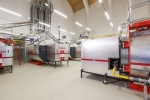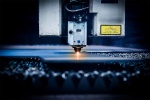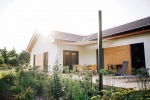References
Control and regulation of building heat exchange stations in the complex care area with Unipi Patron and Gate controllers
Amper Savings uses Gate G110, Patron S107, and Extension xS51 units as part of buildings energy…
Control and monitoring of a water treatment plant or biogas injection station with the Unipi Patron controller
HUTIRA uses Unipi Patron PLC and Mervis SCADA in its HUCS measurement and control system. The HUCS…
Measuring emissions and energy consumption in the factory with Unipi units
SCAO Informatica uses a custom variant of the Neuron S103 controller to measure the efficiency of…
Integration of building automation technologies with Unipi Neuron in the field of IoT
The Czech company, which specializes in controlling smart buildings and smart homes, uses Unipi…
Control and monitoring of a computer farm and office space with Unipi PLCs
The Czech company uses Unipi Patron units to manage and monitor the computer farm and office space.
Control of under-ceiling disinfection and sterilization unit for commercial and industrial buildings with PLC Unipi Neuron
The Czech company uses Unipi Neuron units as a control system for compact under-ceiling units that…
Smart infinity pool automatization with Mervis and the Unipi 1.1
A customer from the south of France uses Unipi 1.1 PLC and Mervis software for the automation of an…
Control of industrial ventilation and cogeneration unit in city pools
The Czech company implementing energy-saving projects uses Unipi controllers to control and monitor…
Household heating controlled by the Unipi 1.1
A customer from the Czech Republic uses the Unipi 1.1 PLC to control heating in a family house.
Control of industrial ventilation and air conditioning system with Unipi Axon PLCs
A Chinese provider of automation solutions is using Unipi controllers for control of air…









